OpenGL-Engine
OpenGL-Rendering Engine: Physically based renderer with deferred shading, SSAO, HDR, Bloom, IBL, and instancing.
It shows below each stage of feature integrated into the engine
Stage 1 - Foundations
Like many engines, began with the most basic scene: a single triangle on screen and from there gradually built the core abstractions.
To support future features, I built core abstractions:
- Hot Reload Shader system for compiling GLSL and managing uniforms.
- Mesh & Model classes (with Assimp integration for OBJ/FBX/GLTF).
- Camera supporting.
- Pipelines for depth, blending, stencil, and rasterizer states.
Stage 2 - Lighting & Shading
Next came Phong and Blinn–Phong shading, with:
- Diffuse and specular texture maps.
- Directional, Point, and Spot lights, each with attenuation.
(Multiple Lights)
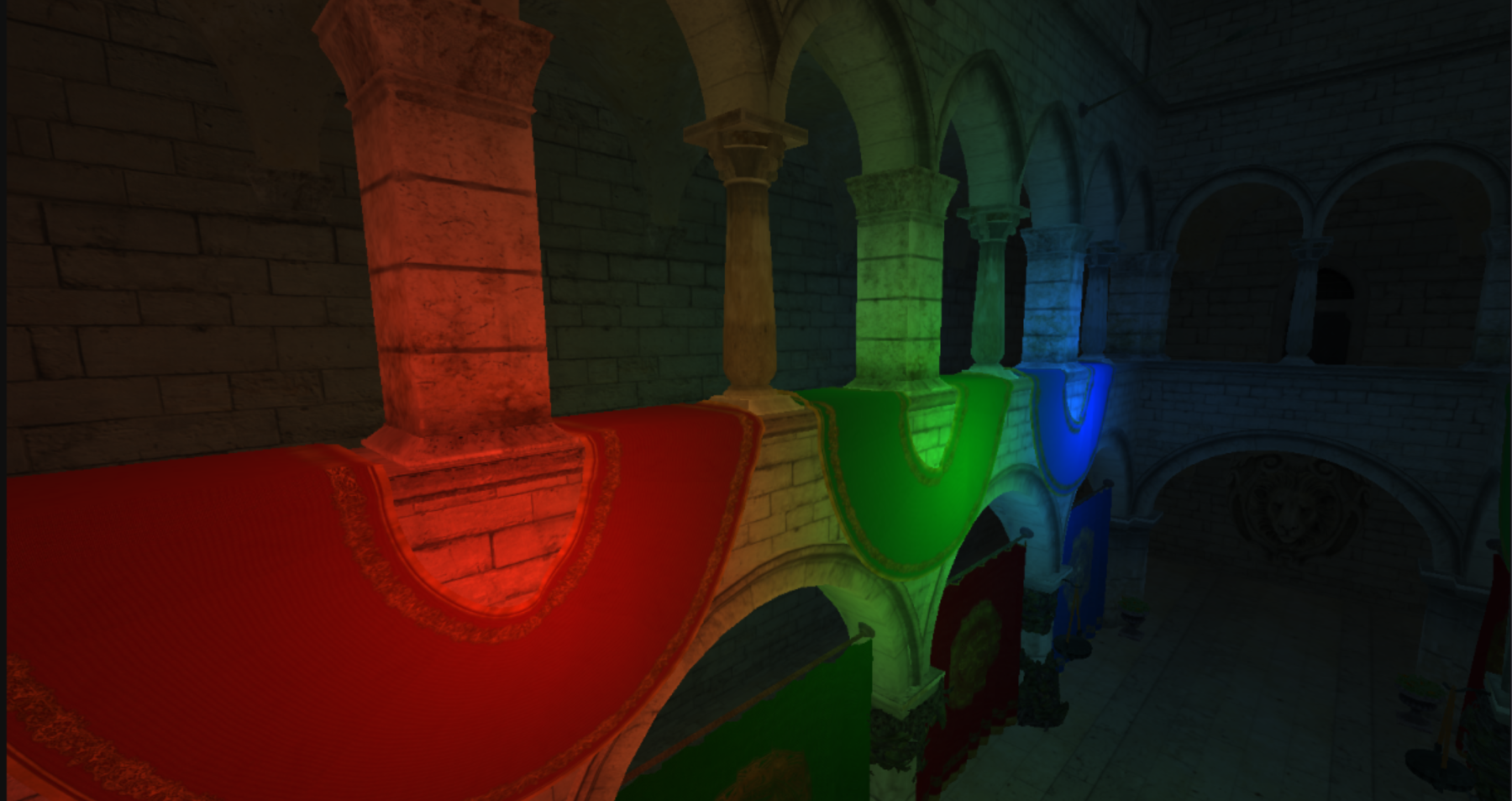
Stage 3 - Shadows
Lighting without shadows felt incomplete. I implemented:
- Directional shadow mapping with orthographic projections.
- Point light shadows using depth cubemaps and omnidirectional sampling.
I added ImGui debug views to inspect light frustums and tweak bias/PCF settings.
(Directional shadows projected into the cathedral)
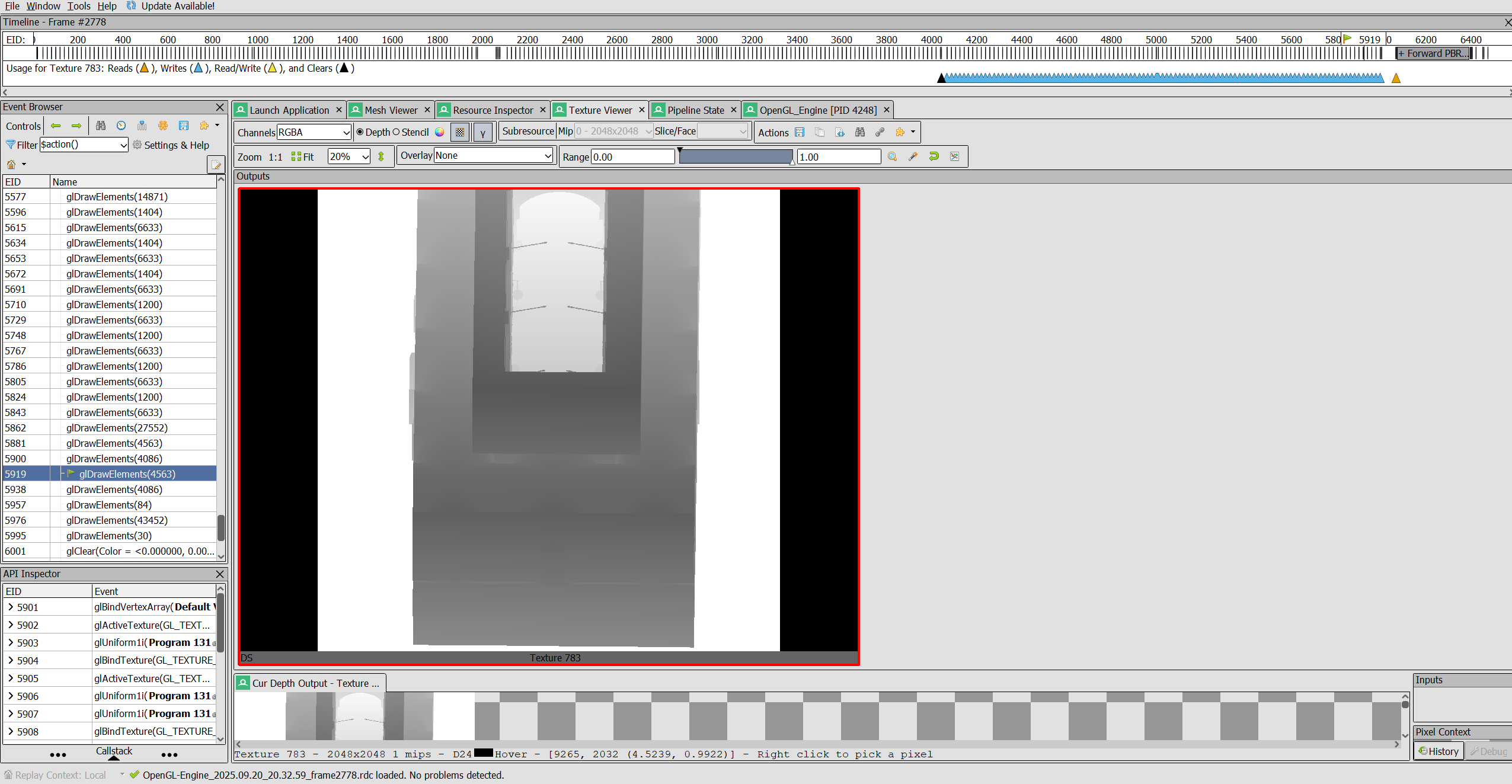
(PointLight shadows)
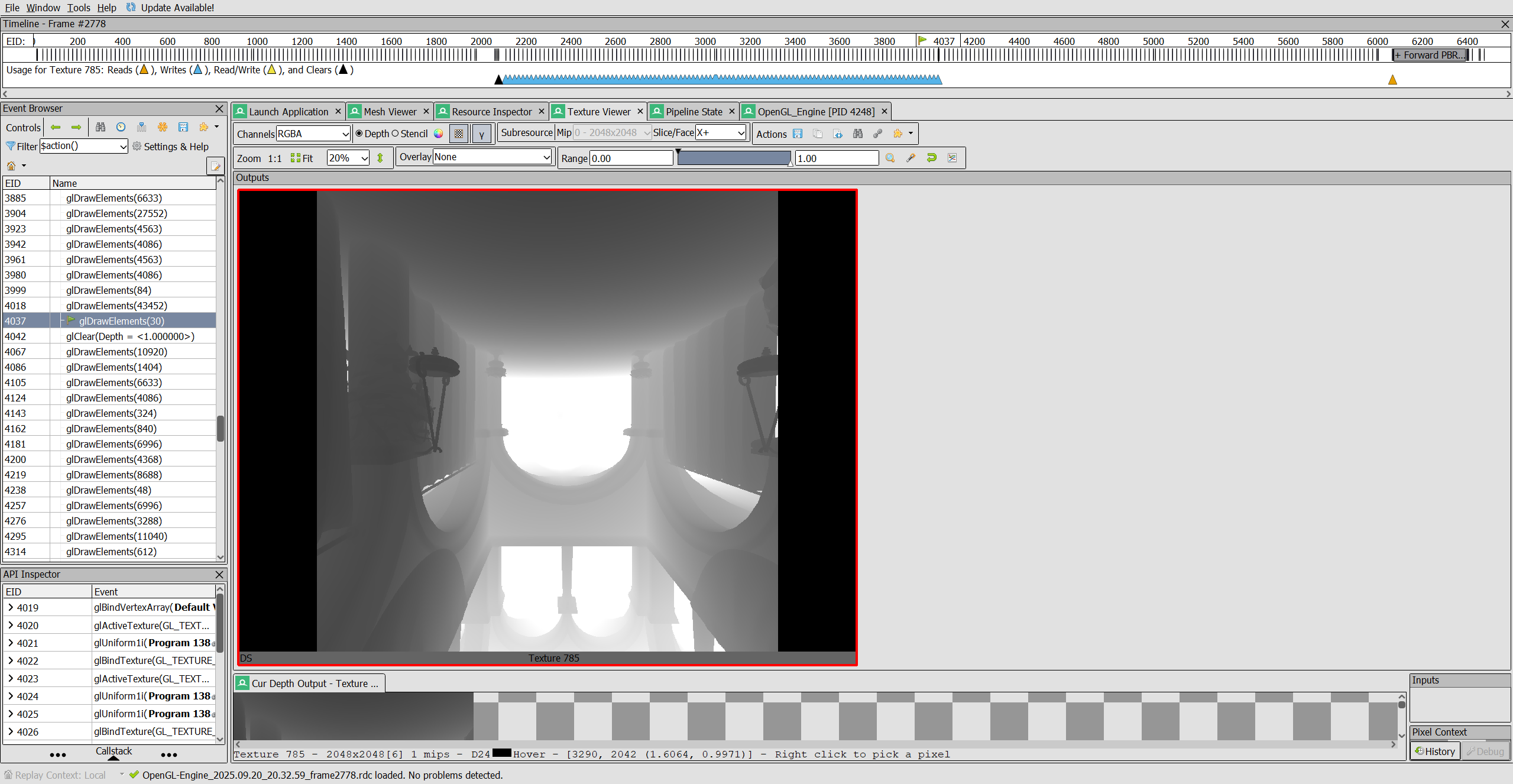
Stage 4 - Normal & Parallax Mapping
Flat textures weren’t enough so introduced:
- Normal Mapping for fine surface detail.
- Parallax Occlusion Mapping for height illusion.
(Normal Map)
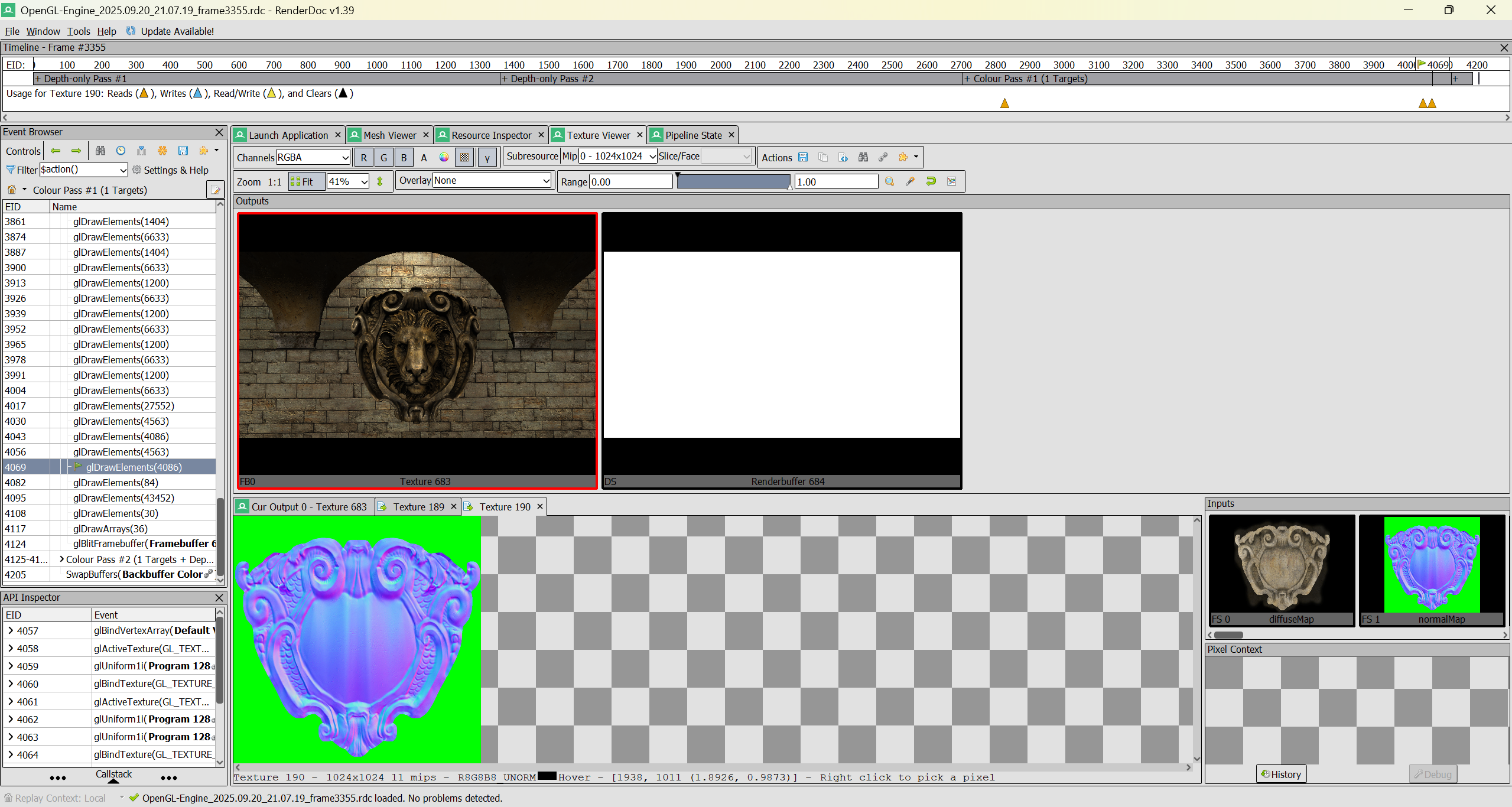 (Parallax Test)
(Parallax Test)
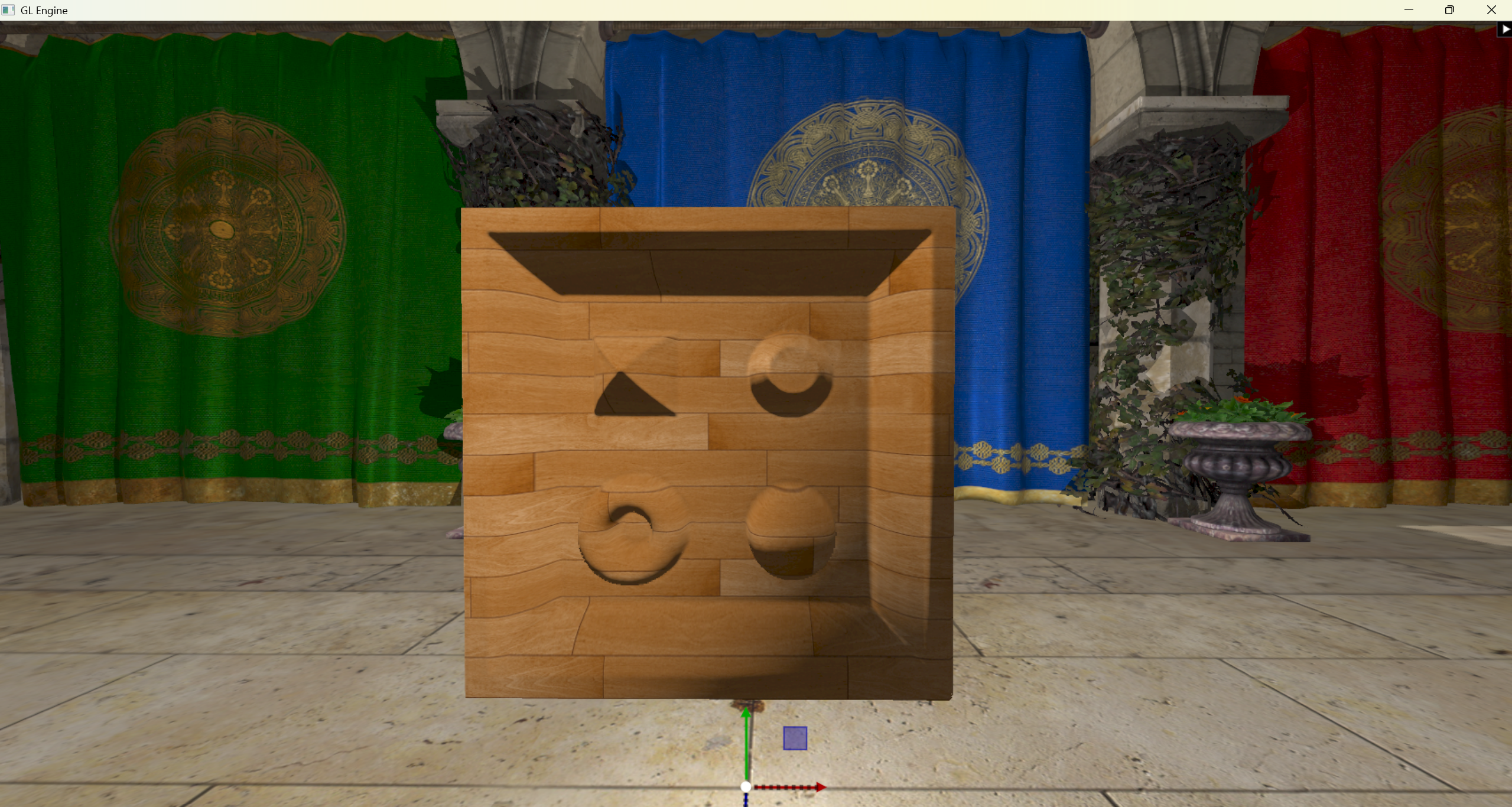
Stage 5 - HDR, Bloom & Post-Processing
The next is through tone mapping and bloom:
- HDR framebuffer with exposure controls.
- Multi-pass Gaussian blur bloom.
- Gamma correction for accurate brightness.
(Bloom on emissive lights in Sponza)
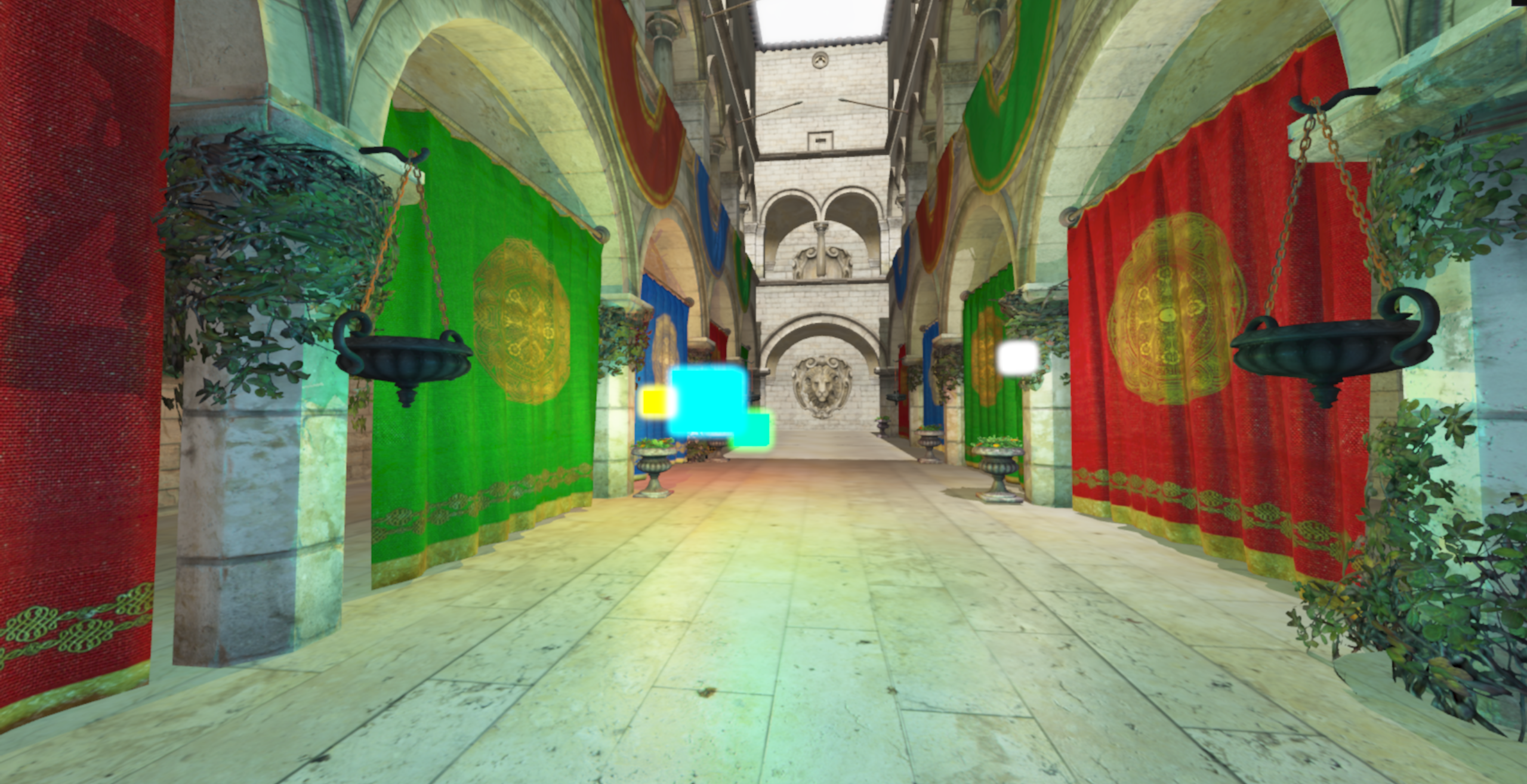
(High Exposure)
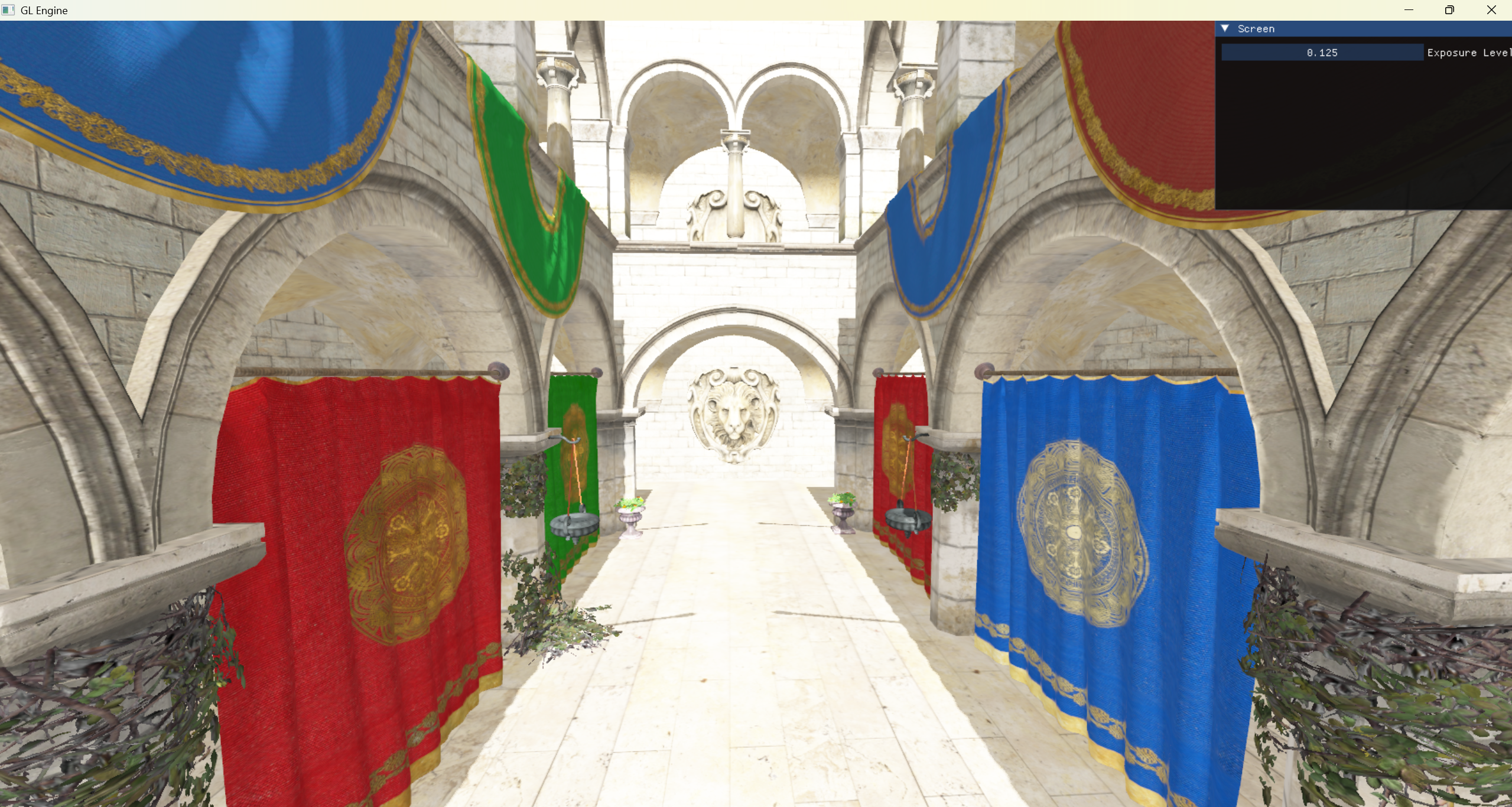 (Pixelated)
(Pixelated)
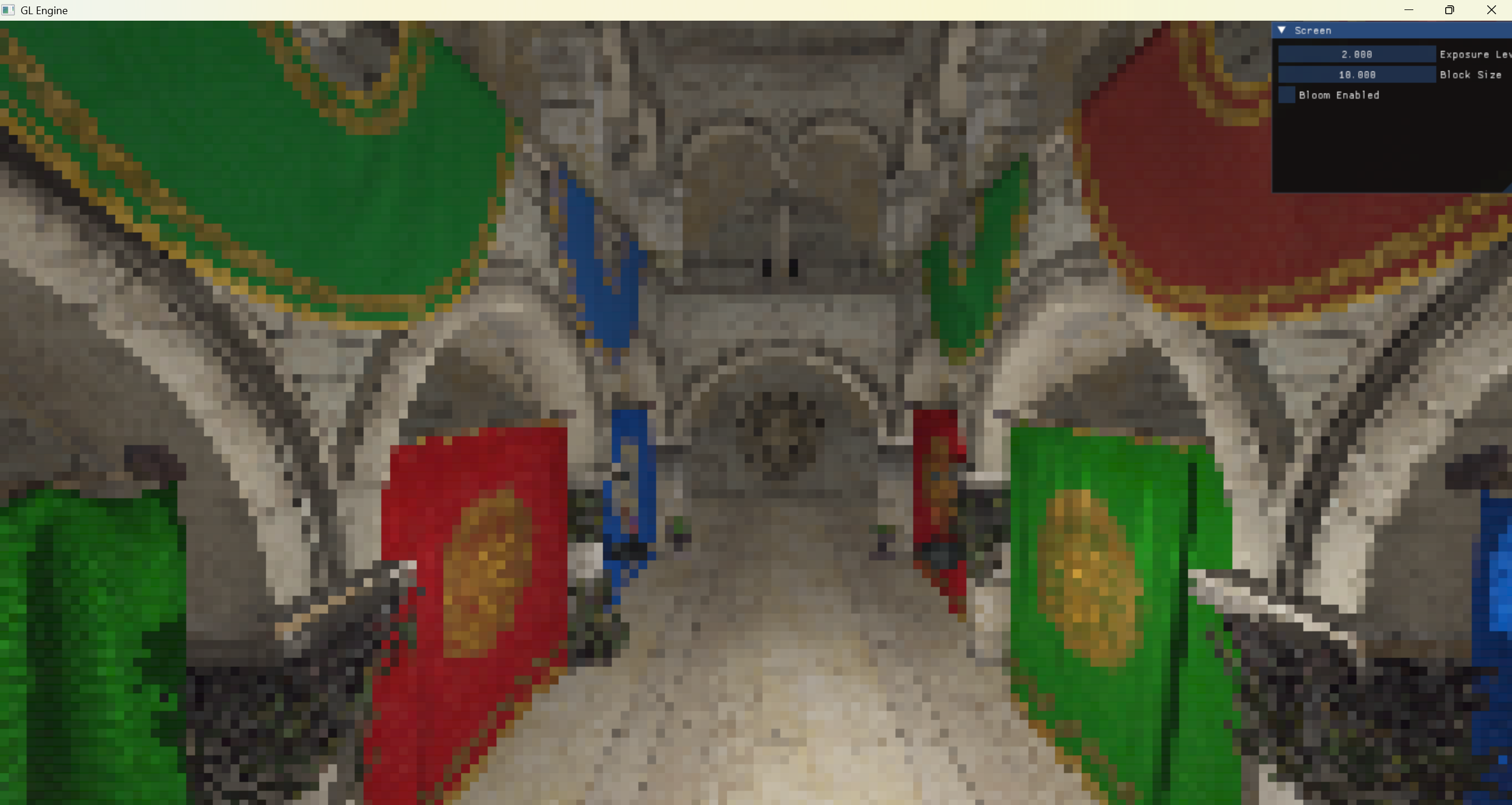
Stage 6 - Deferred Rendering & SSAO
Switching to Different Rendering Technique:
- Deferred Shading with a G-buffer (albedo, normals, positions).
- SSAO (Screen Space Ambient Occlusion) with random kernel samples + blur.
RenderDoc captures, stepping through G-buffer attachments.
(G-buffer outputs)
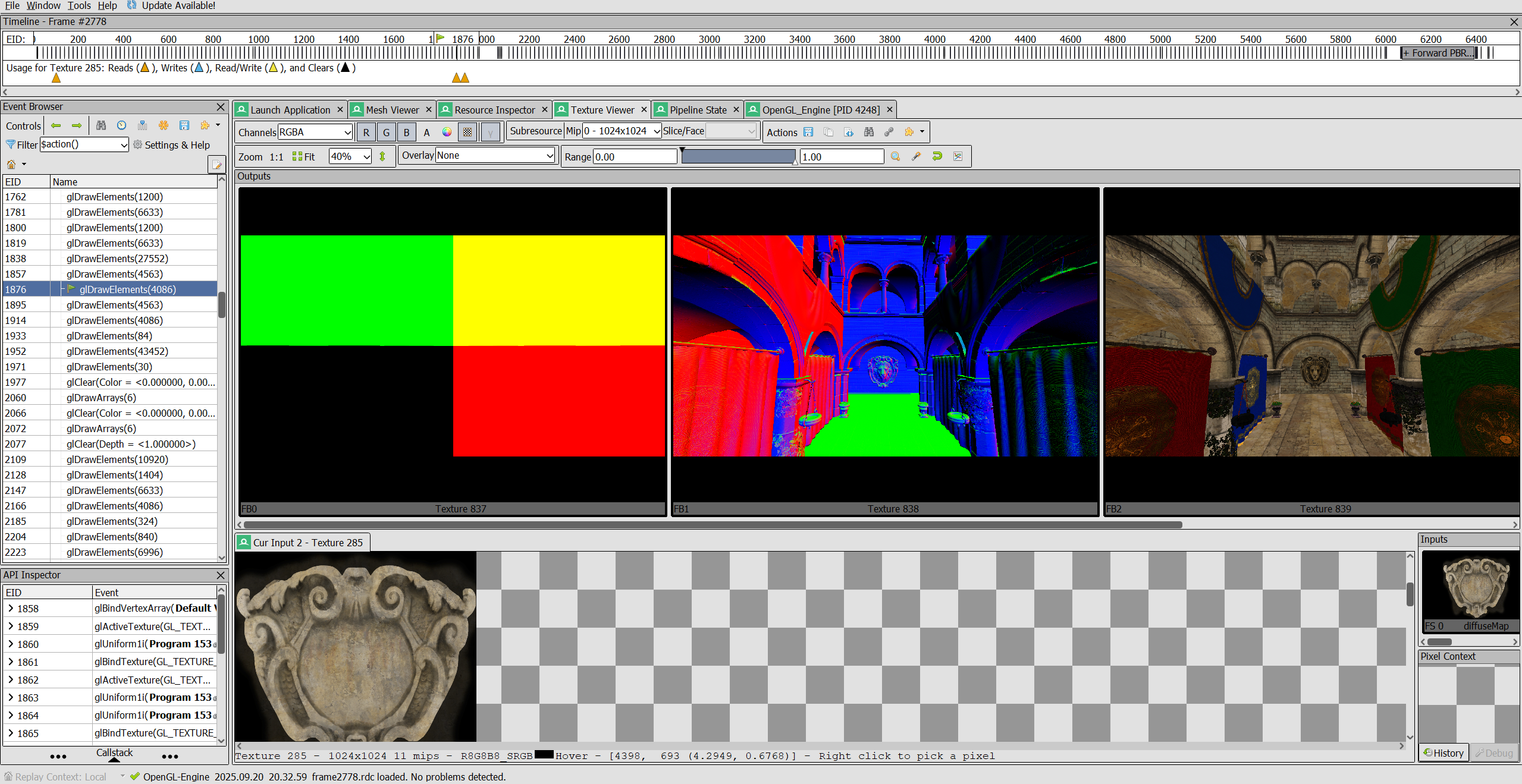
(SSAO pass)
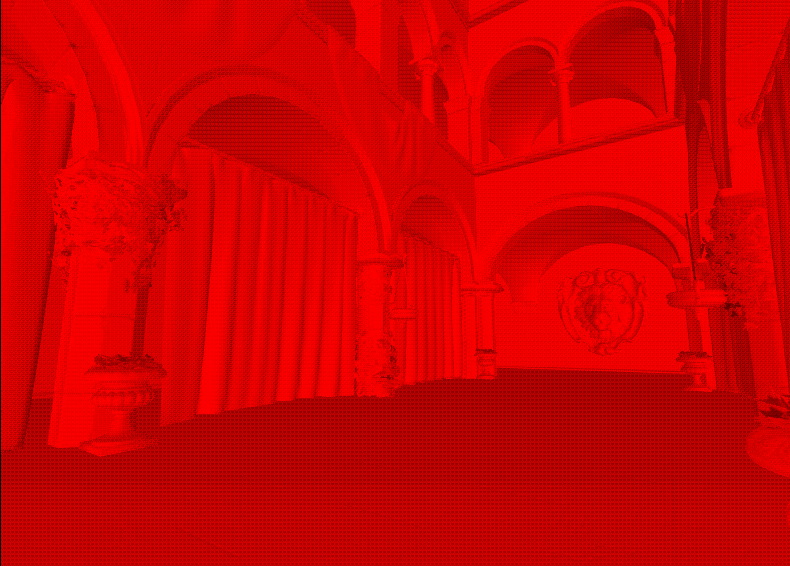
Stage 7 - Physically Based Rendering
I implemented Cook–Torrance BRDF with:
- Albedo, Metallic, Roughness, AO, and Normal maps.
- Energy-conserving specular highlights.
Materials began to look photorealistic.
(Rusty metal sphere)
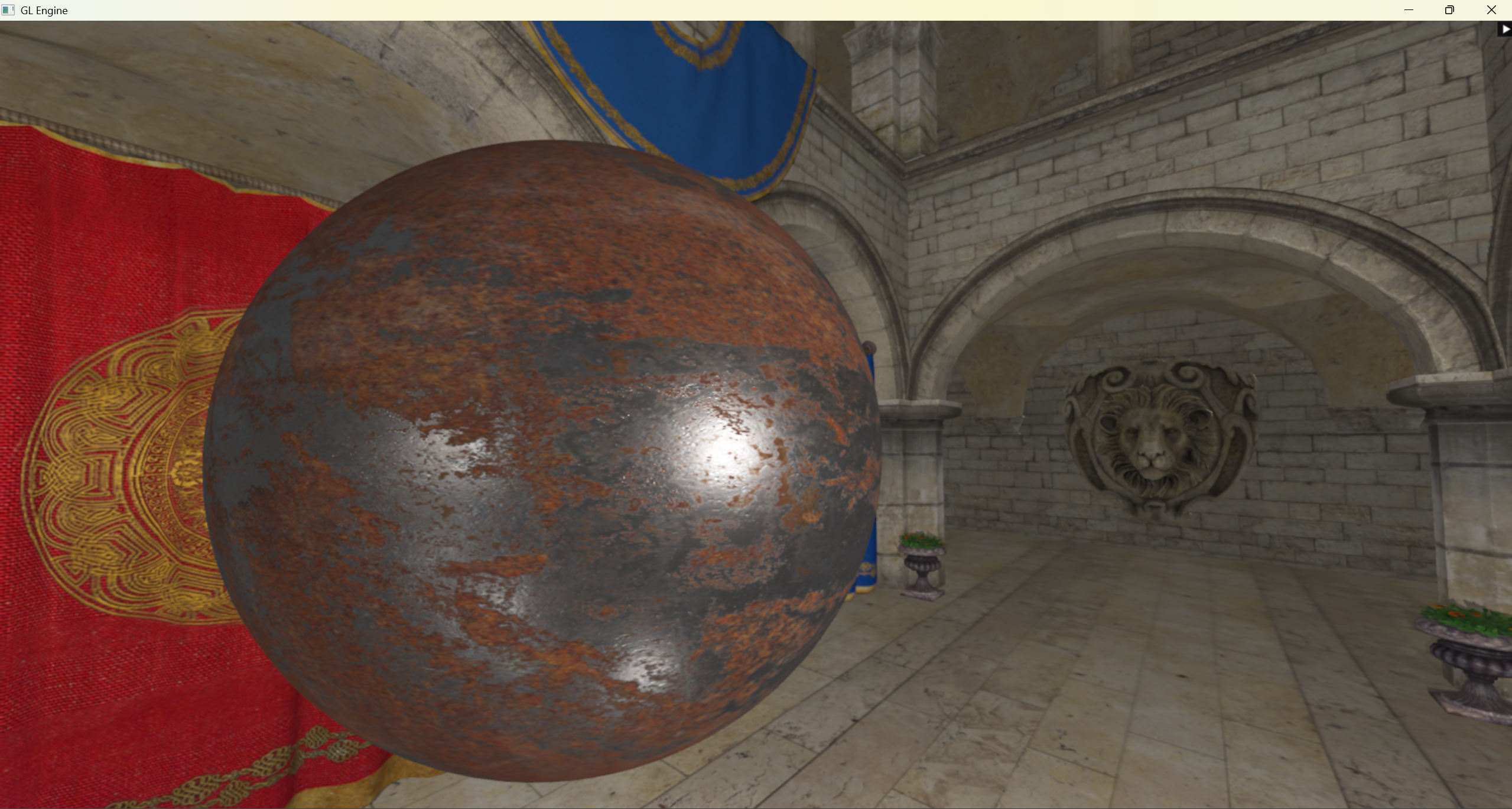
Stage 8 - Image-Based Lighting
To further, added IBL (Image-Based Lighting):
- Converted HDR equirectangular maps → cubemaps.
- Precomputed diffuse irradiance and specular prefilter maps.
- Integrated into the PBR shader.
Now objects reflected their environment naturally, even without direct lights.
(Spheres under HDR skybox with specular reflections)
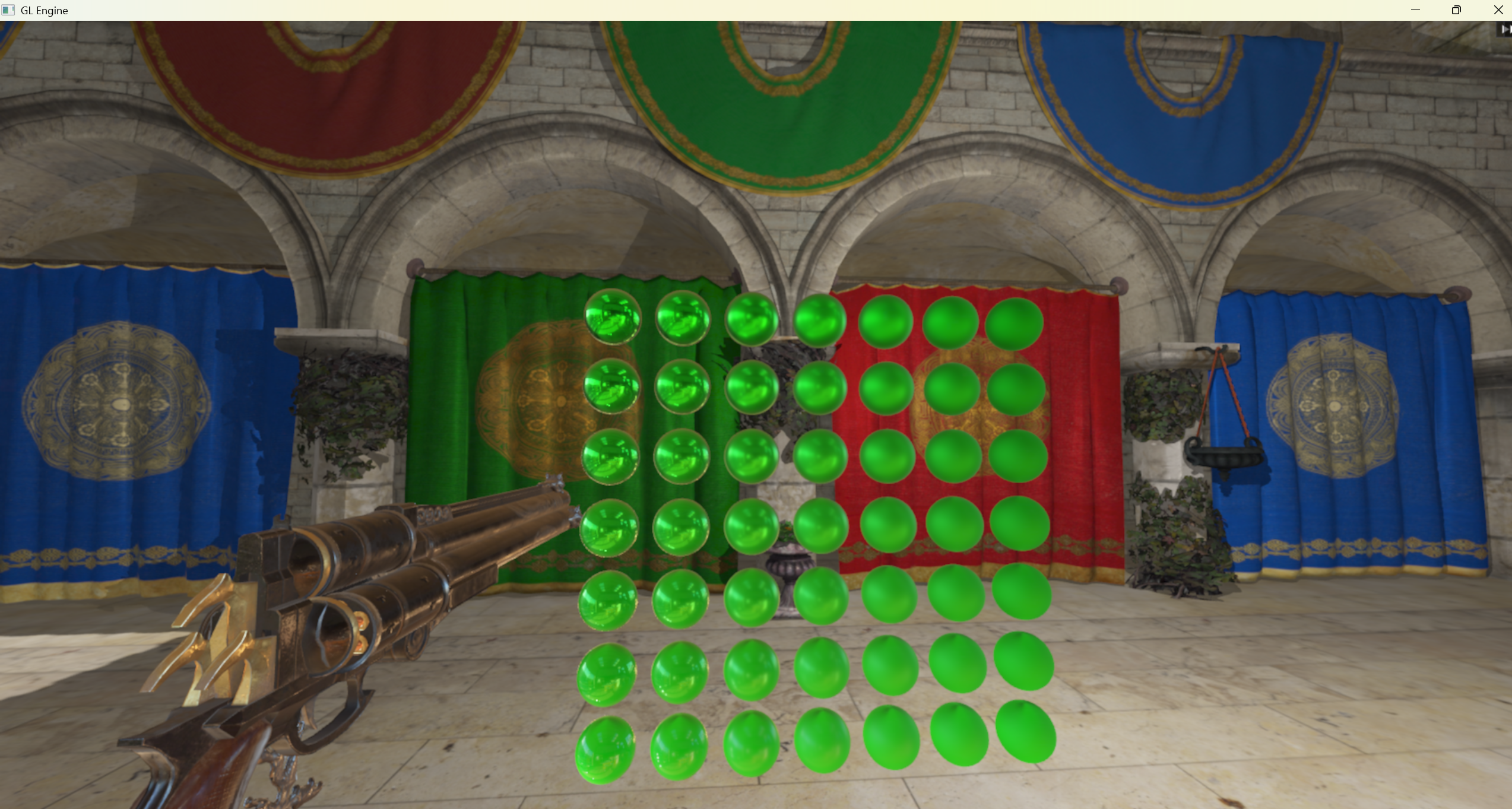
Stage 9 - Instancing & Vegetation
I added GPU instancing to draw thousands of leaves with a single draw call.
This unlocked massive vegetation rendering.
(100.000 Vegetation instancing test grid)
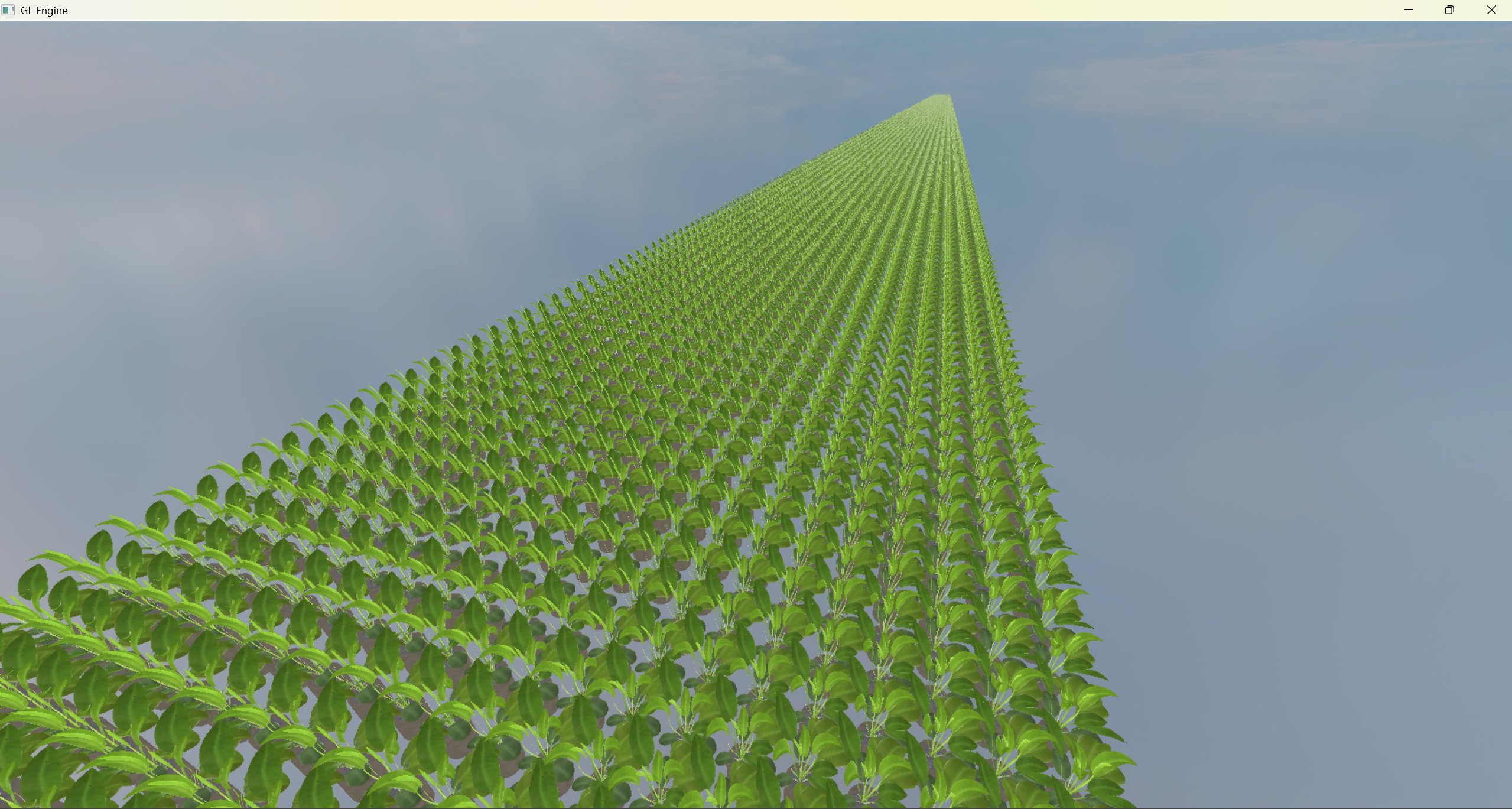
Stage 10 - Debugging Tools
Throughout Debug, I leaned on:
- RenderDoc for frame captures
- ImGui for parameter settings
(Debug Normals)
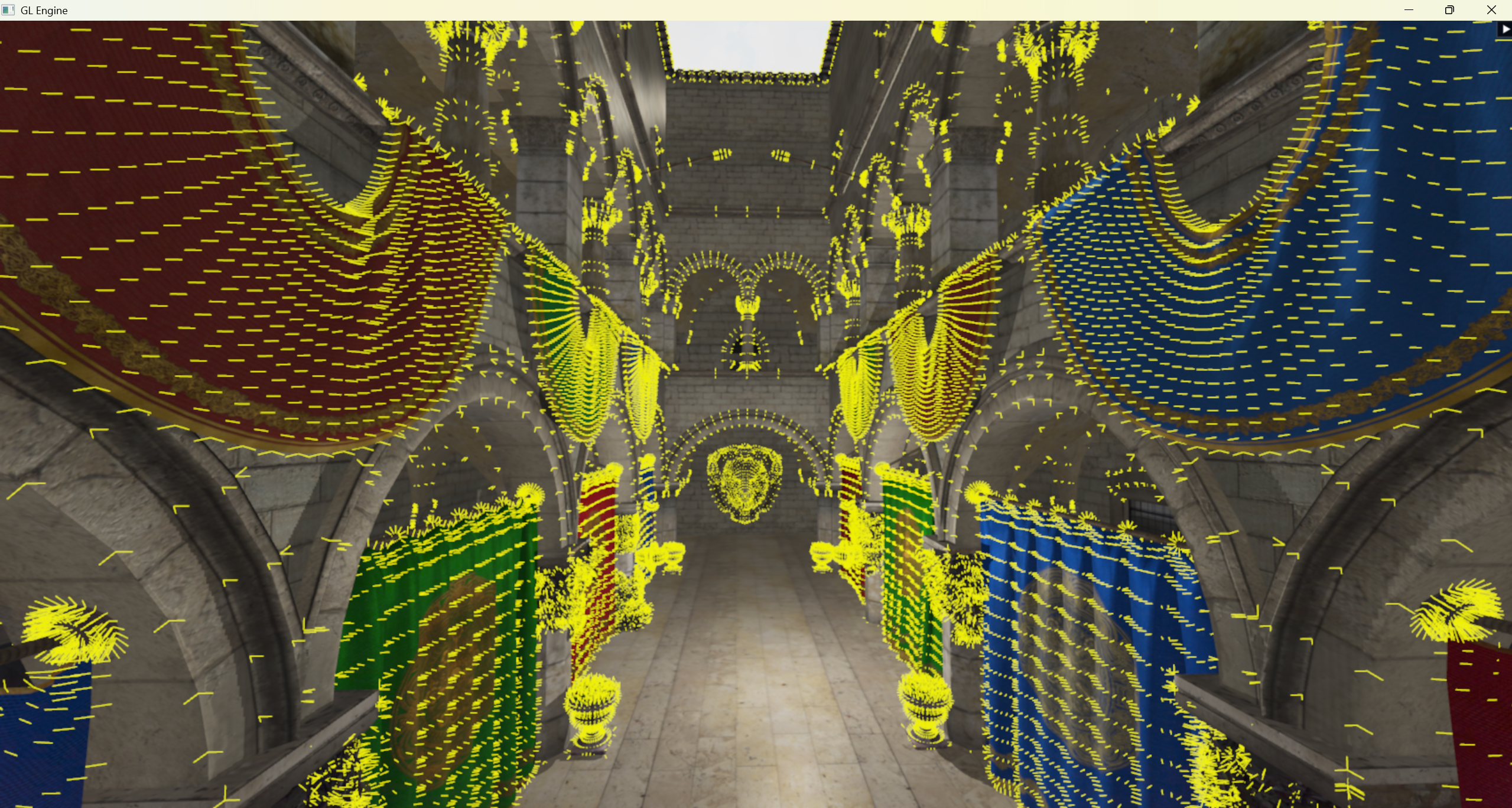
(Debug Shadow Aliasing)
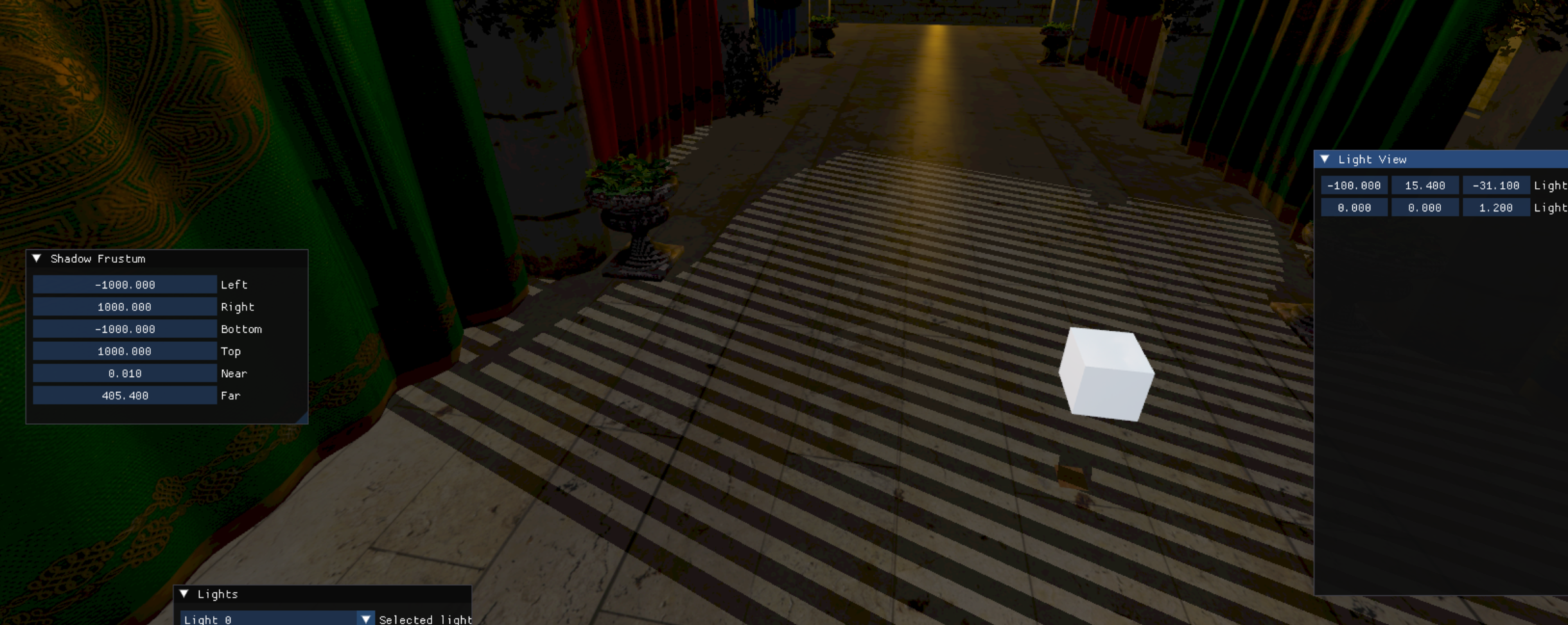
Reflection
This project taught me:
- The full graphics pipeline, from vertex data to post-processing.
- How to manage a C++ engine architecture with reusable systems.
- How modern rendering features (IBL, SSAO) work mathematically and practically.
Tech
- Languages: C++17, GLSL
- Graphics: OpenGL 4.5
- Build & Debug: CMake, RenderDoc